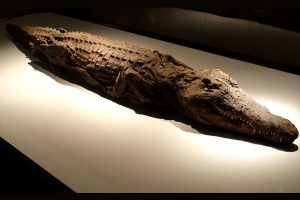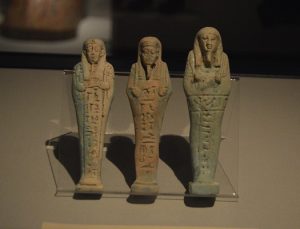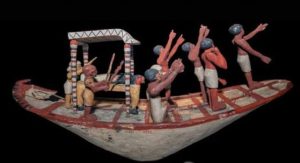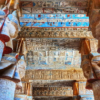Mummification in Ancient Egypt
The Idea of Mummification
From the beginning of creation, the ancient Egyptians wondered where the sun went after it set? The ancient Egyptian thinkers believed that the universe originated from an eternal water (Nun) from which the sun first emerged. And it began to rise daily in the east and set in the west. Then it returns on the next day to begin a new cycle of life. So, the ancient Egyptians believed that the life of the deceased would be like the life of the sun. He lives in the east, so he must be buried in the west like the sun. So, the Egyptians asked themselves, what will I do after death? And from here, the ancient Egyptians began to think about eternity in the afterlife. in their minds, the deceased in this world will do the same work in the afterlife. And to live happily in the afterlife and without the hardship of this world, the ancient Egyptians thought about how to ease themselves in the afterlife. In the Egyptian belief, the spirit of the deceased (Alka) enters the body after death. And in order for it to recognize it, the body must be well preserved. for this reason, they began to think of mummification to preserve the body of the deceased over the years.
The Mummification Process
Mummification took place in workshops, which were special, secluded places that only priests specialized in mummification could enter. The deceased’s body was placed on a mummification table, after which the nasal bone was broken and the contents of the brain were extracted to remove the fluids. As for the intestines, they were removed by making an incision on the left side below the abdomen. They were washed and individually soaked in natron salt and placed in four Canopic jars in the form of the sons of Horus, which are:
• ‘Imsety ‘, with the head of a human, to protect the liver.
• ‘Hapi ‘, with the head of a baboon, to protect the lungs.
• ‘Duamutef’, with the head of a jackal, to protect the stomach.
• ‘Qebehsenuf’, with the head of a falcon, to protect the intestines.
Here the question is: Which organ was not removed from the body?
It is the heart. Why? Because the ancient Egyptians believed that the heart was the source of actions. Therefore, a person is judged by what is in his heart, and hence, the Egyptians placed the heart of the deceased in one scale and the feather of justice (Maat) in the other. If his deeds were good, then his heart would be lighter than the feather. The body was placed in a large amount of natron salt for 40 days. After that, it was transferred to a place for purification with Nile water, and the body was purified and covered with resin, then wrapped in linen. And a set of amulets and gold jewelry were placed with it in the tomb. This led to the spread of tomb robbery. And before burial, the priest performed a ritual of opening the mouth so that the deceased could regain his senses once again.
The Opening of the Mouth Ceremony
The Opening of the Mouth ceremony is a ritual that the ancient Egyptians followed during mummification. Priests would recite specific rituals and texts to help restore the soul to the deceased. The process of opening the mouth was performed using special hand tools that belong to the deceased. Mummification continued in this manner throughout the entire Pharaonic era. However, when the Ptolemies and Romans ruled Egypt from 332 BC to 642 AD, the influence of Greco-Roman culture appeared on mummification. Mummification continued in the same way, but the Romans added that, due to the high cost of mummification for individuals, they made colored masks (Fayum portraits). They also covered the fingers, toes, eyelids, lips, and genitals with a thin layer of gold. Furthermore, the embalmers in Nubia during the Greco-Roman period, if the head was separated from the body, would reattach it using a rod, similar to the mummies of Giza.
Mummification Workshops in Saqqara
Two mummification workshops were discovered in Saqqara in 2018 AD. The first one was for humans and was rectangular in shape, containing two beds for human mummification. A large number of pottery vessels were discovered inside, most notably the “Hes vases” which are certain type of vessels used in the mummification process. The second workshop was for animals, rectangular in shape, and contained 5 sunken beds. A number of vessels were found inside, which were probably used in mummifying the sacred animals of the goddess Bastet (the cat).
Mummy of Amenhotep II
Mummy of King Seti I
Image depicting the Opening of the Mouth ceremony
four Canopic jars made of marble, located in the Mummification Museum in Luxor
The Mummification Museum in Luxor
The Mummification Museum in Luxor was opened on May 7, 1997. It has an area of approximately 2035 square meters. The museum contains a single exhibition hall where a number of artifacts are displayed that provide a comprehensive overview of the mummification process.
Tools Used in Mummification
There are tools that have been found and others that have not. For example, we have not found date syrup or resin or the linen used in the wrappings, and perhaps we will find them in the future in one of the mummification workshops.
• But the most important tools that have been found are:
• A hook was used to pull the brain out through the nose.
• A knife was used to open the abdomen from the side.
• Forceps were used to grasp the organs from inside the abdomen.
• A bronze needle with a linen thread was used to sew the body after removing the organs and placing the salt inside.
• There was also a syringe to extract waste from the stomach.
• All of these were made of bronze, except for the mummification brush, which was made of palm leaves.
It’s important to note that they would close the incision either with beeswax or with a linen thread. It’s also impressive and fascinating that the ancient Egyptians, despite their scientific and medical brilliance, did not use metal scalpels for mummification. Instead, they used scalpels made of certain type of stones.
Current scientific experiments have proven that these scalpels are safer for opening the abdomen than metal scalpels because they create simple cuts in the skin, opening it without penetrating deep inside, which makes it easier to sew the skin.
Where did these geniuses get these brilliant ideas that were thousands of years ahead of their time?
The Most Important Pieces in the Museum
The mummy of masaharta, the son of King Panjem from the 21st Dynasty, was discovered by Maspero in 1881.
The mummy of masaharta, the son of King Panjem from the 21st Dynasty, was discovered by Maspero in 1881.
Mummified crocodile: Known as the god Sobek.
Shabti statues: Which serve the owner of the tomb in the world
Model of a funerary boat: For transporting the deceased’s body across the Nile.
tools used in mummification

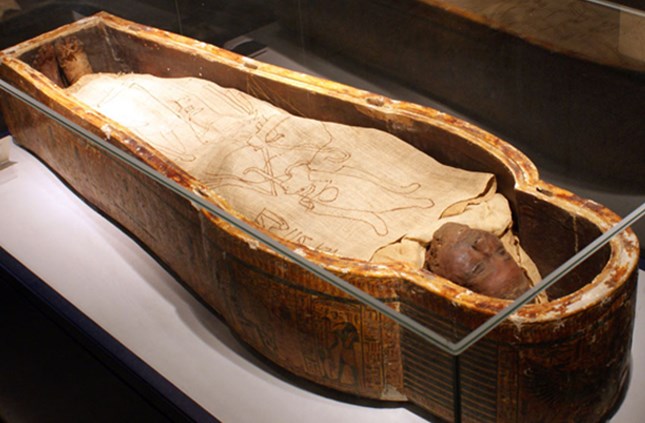


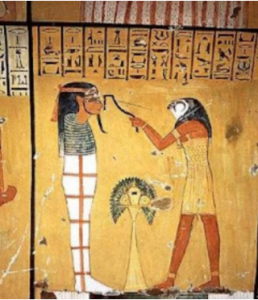
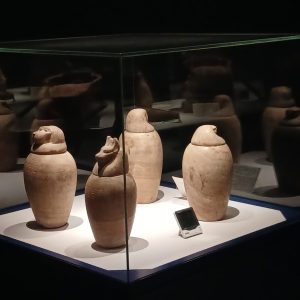
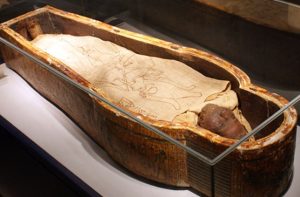
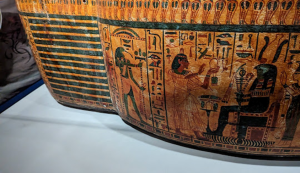
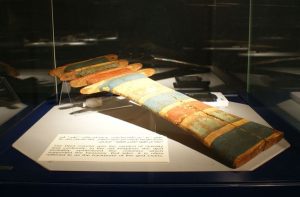 The Djed Pillar, the spinal column of the god OsirZi
The Djed Pillar, the spinal column of the god OsirZi